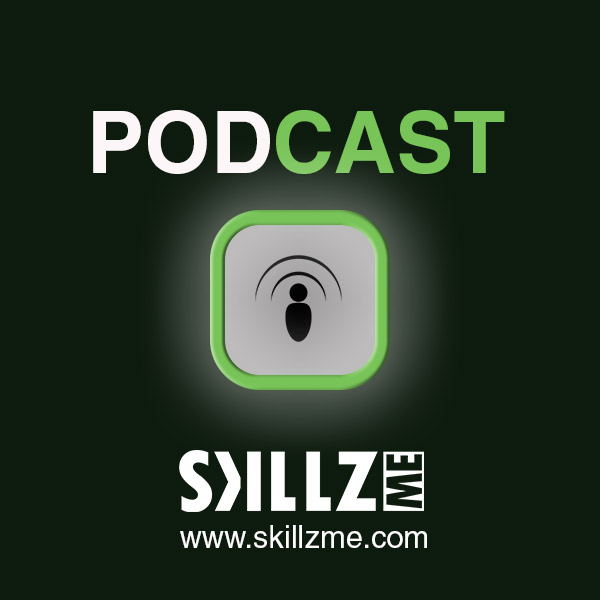Marketers are struggling with pitfalls all over the place when working with websites and e-commerce market places, technical mistakes are common. Technology can be overwhelming and pulling their attention away from the importance to focus on audience, products, services and brand management.
Seriously, only 80? Sorry, I had to mention this here, but a good starting point is to have awareness for the pitfalls. What are the most common technical and search engine optimization (SEO) mistakes on e-commerce websites? Which technology, security, performance, and content issues are many marketers and organizations struggling with?
SEMRush a group of SEO and IT specialists used its Site Audit tool to analyze 1,300 e-commerce websites around the globe to compile a report of findings. They summarized the 80 most common technical mistakes in an infographic.
It is important for your site to be crawlable as this is the only way search engines can index your content. If your content is not crawlable for whatever reason, it will not be indexed and that content will not show up in search engine results.
E-commerce sites are a different breed of a website and it is important for them to block search engines from crawling some parts of the site. For example, faceted navigation that allows people to search sites with multiple filters applied can cause duplicate content if not handled properly.
INTERNAL LINKING
Internal linking helps both users and search engines to find your content. and tile fact that 900 e-commerce sites have broken internal links on their websites shows how even the big e-commerce companies with large marketing budgets can still get the simple things wrong.
SITEMAPS
Sitemaps are the way to help search engines find your content and to let them know ii the content has been updated. But not every page of your website has a place in the sitemap, like pages that redirect or have the no index tag. You should only be sending search engines information on pages you would like to have indexed.
URL STRUCTURE
Google recommends keeping the URL structure simple, so both crawlers and humans can read them. Using underscores instead of hyphens, having too long URLs or too many URL parameters adds to the confusion.
ROBOTS.TXT
The robots.txt file is a way for site owners to communicate with search engines before they start crawling a website. Informing web crawlers about which areas of a website should not be processed or scanned is very important and the fact that we found 195 e-commerce sites without robots.txt is quite shocking.
OUTDATED TECHNOLOGY
It is not advised to use flash content on a website. Whilst it may look great. using this outdated technology can cause troubles with the search engine indexing.
Doctype tells the search engine which version of
SECURITY: HTTPS IMPLEMENTATION
Website security is a high priority for online stores, a browser signaling an unsecured connection can scare off your customers.
Migrating to HTTPs can be a challenge, even for the big e-commerce companies. The majority of analyzed websites have pages linking to the old (HTTP) version of their site and pages with mixed content. so the search engines can’t tell if the page is secure.
SECURITY: SERVER & SSL CERTIFICATE
Implementing HTTP Strict Transport Security (HSTS) is a must for e-commerce as it forces the site to load only the secure version, leaving fewer opportunities for hackers.
Another component of secured connection that gets overlooked is managing the SSL certificate – it should be up to date, valid, and registered to the correct domain.
INTERNATIONAL SEO
Growing your e-commerce site globally is a great challenge. If your site sells the same product in different countries and languages, you need the search engines to understand that you might have similar content for different locations.
Hreflang tags help with this, but many of the sites that we audited had them configured incorrectly.
WEBSITE PERFORMANCE
We have the need for speed. Website performance has never been so important. Your website’s loading speed has an effect on your user’s experience and your rankings in search engines. Reports show that for every second of delay in load time you can see a 7% decrease in conversions.
AMP
With over 60% of searchers now using mobile and Google switching over to mobile first indexing, providing a good mobile experience is more important than ever before.
Accelerated Mobile Pages (AMP) is the technology that helps to provide users with the much faster loading mobile pages, but in order to do this it puts restrictions on the page’s code, and it requires attentive implementation, so not many e-commerce websites use this technology yet.
To help you set up your AMPs correctly, SEMrush detects over 40 AMP related mistakes while showing you the exact line of code with the error.
CONTENT
Investing time in the quality of your content really pays off. It is as important for e-commerce as for any other site. But e-commerce content is harder, as many shops are selling the same product in different colors and sizes. so duplicate content along with short descriptions becomes a much more common issue.
META DESCRIPTION
Take the time to see how you can make your meta descriptions more unique and catchy. Users in search only get to see this snippet of text in the SERP so cry lo let them know what a good product and deal you’re offering.
TITLE TAG / H1 TAG
We found that over 400 e-commerce sites had pages with no title tag, which is crazy as the title is the first impression of a website that search engine users get. Titles should be informative, and as e-commerce, you can try including price or sale data to increase your CTR. Test and optimize until you get the balance right.
The H1 tag is a page heading that lets the search engine know what the topic of the page is, yet over 1000 e-commerce sites have pages with no H1. Google bots can handle multiple H1’s on a page but to avoid distracting them it is advisable to use only one. For an e-commerce page, one is usually enough, you wouldn’t want an H1 on your pages saying “Add to Cart”.
IMAGES
Broken images can cause problems for any site but when it comes to e-commerce no image almost always means no money. Alt tags are extremely important too as they are used to help with image search and are also used by screen readers for the visually impaired. Make sure that your alt tags are descriptive and relevant to the image.
You can read all the technical mistakes below in the infographic and how they are effecting the 1300 visited websites. Share your experience of ranking problems with search engines and if you could improve them with correcting them, use our commenting section below.
![80 Common SEO and Technical Mistakes on E-Commerce Websites [Infographic] 80 Common SEO and Technical Mistakes on E-Commerce Websites [Infographic]](https://skillzme.com/wp-content/uploads/2019/02/common-LG-semrush-200118.jpg)


![The Most Visited Websites in the World, by Category [Infographic] The Most Visited Websites in the World, by Category](https://www.skillzme.com/wp-content/uploads/2025/02/hero-imageThe-Most-Visited-Websites-in-the-World-by-Category-200x200.jpg)
![5 Bold Predictions for AI in 2025 [Infographic] hero-image-AI-Predictions-2025](https://www.skillzme.com/wp-content/uploads/2025/02/hero-image-AI-Predictions-2025-200x200.jpg)


Asking questions are actually pleasant thing if you are not understanding something totally, however this article
provides fastidious understanding even.
Great post. I used to be checking constantly this weblog and I’m impressed!
Extremely helpful info specifically the closing section :
) I deal with such information a lot. I used to be
seeking this certain information for a long time. Thanks and good
luck.
I have read so many articles or reviews about the blogger lovers
except this article is truly a nice post, keep it up.
I visited many web sites however the audio quality for audio songs current at
this site is truly marvelous.
I have to thank you for the efforts you have put in writing this blog.
I am hoping to check out the same high-grade blog
posts from you later on as well. In fact, your creative writing abilities has inspired
me to get my own site now 😉
I have been exploring for a little bit for any high-quality articles or weblog posts in this sort of area .
Exploring in Yahoo I at last stumbled upon this site. Studying
this information So i am satisfied to show that I have
an incredibly excellent uncanny feeling I found out just what I needed.
I most undoubtedly will make certain to don?t omit this website and provides it a glance on a continuing
basis.
Awesome article and lots of value. I am not doing any e-commerce personally, but SEO it tricky and difficult to understand for many people. It is not always clear what you may be doing wrong, and the ignorance can harm your growth and development. Thanks for providing such an informative article to help simply the concept and process that businesses need to focus on.
Thank you Jefrey for your kind words
I am delighted to see this, I struggle a lot on my SEO with our e-Commerce market place. I always thought there is more than just putting all your money into Google, now I know what I do wrong. Everybody told me unique content, well as an online store which sells the same like 100 others there needs to be more than that. thanks Skillz Team